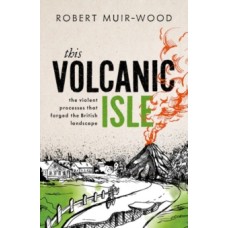From the natural geometry of the Giant's Causeway to the sarsen slabs
used to build Stonehenge, we are surrounded by evidence for the
extraordinary geological forces that shaped the British Isles. Running
coast to coast through Devon is 'Sticklepath', Britain's 'San Andreas', a
geological fault with the two sides displaced horizontally by several
kilometres, all within the recent geological past. The Sticklepath Fault
is just one manifestation of the rich tectonic history of the British
region since the asteroid collision that ended the reign of the
dinosaurs, 66 million years ago.
Raised out of the Chalk Sea,
the original Albion was a thickly forested island a thousand kilometres
long,surrounded by chalk cliffs, punctuated with great volcanoes, and
the site of two trial 'spreading ridge' plate-boundaries. As the
volcanoes shifted west, and Greenland separated from Europe, the
wind-blown volcanic ash laid the strata on which London was founded. The
vertical Needles, known to everyIsle of Wight sailor, are part of the
northern foothills of the Pyrenees.
When the collision subsided,
rifting created a garland of Celtic lakes from Brittany to the Outer
Hebrides. In This Volcanic Isle Robert Muir-Wood explores the rich
geological history of the British Isles, and its resulting legacy. Along
the way he introduces the personalities who shared a fascination for
Britain's tectonic history, including Charles Darwin the geologist,
Tennyson the science-poet, and Benoit Mandelbrot, the pure mathematician
who labelled the west coast of Britain a fractal icon.
Here is the previously untold story of how earthquakes and eruptions, plumes and plateboundaries, built the British Isles.
Hardback
This Volcanic Isle: The Violent Processes that forged the British Landscape - Robert Muir-Wood
- Product Code:new
- Availability:In Stock
-
£15.99

